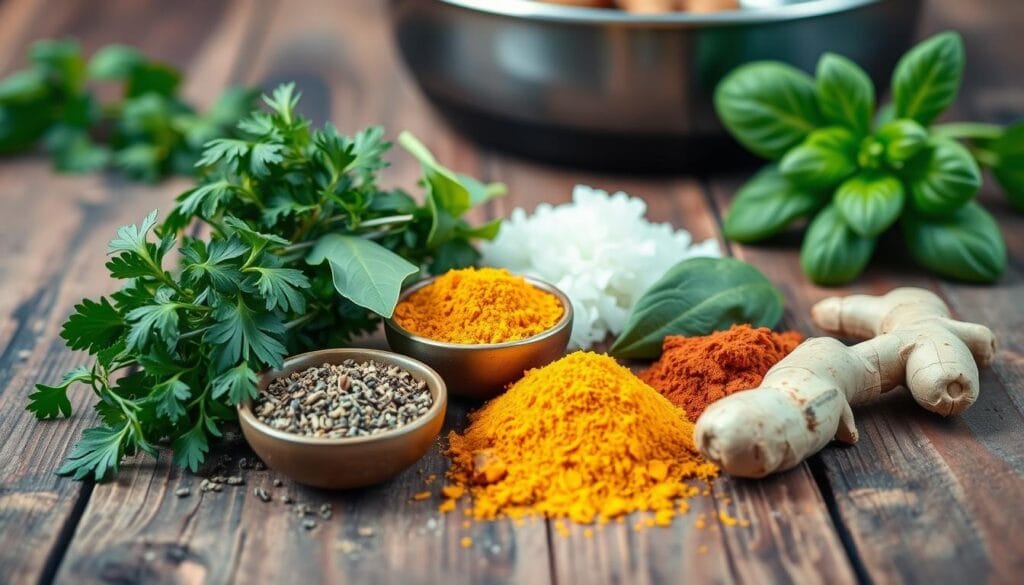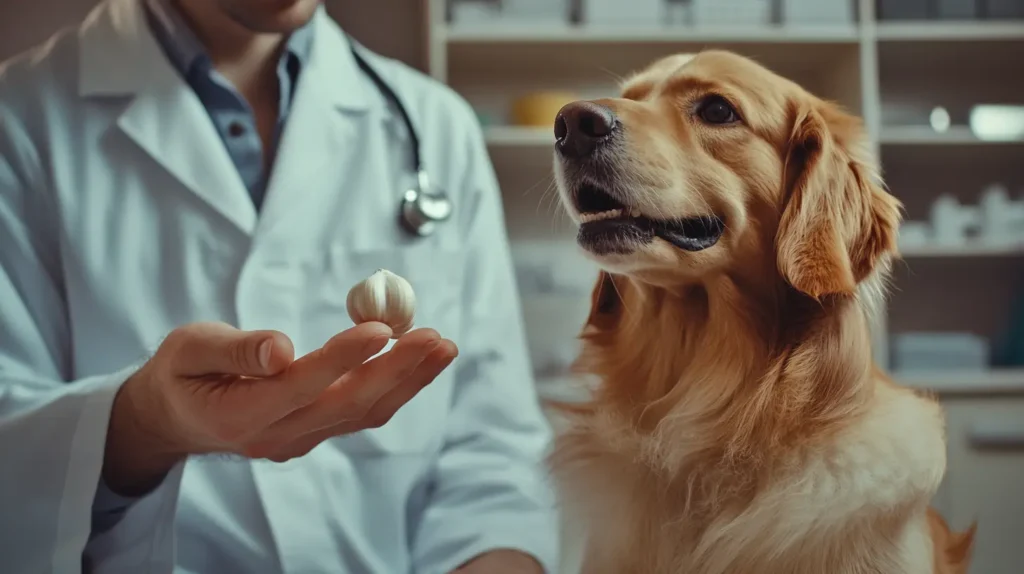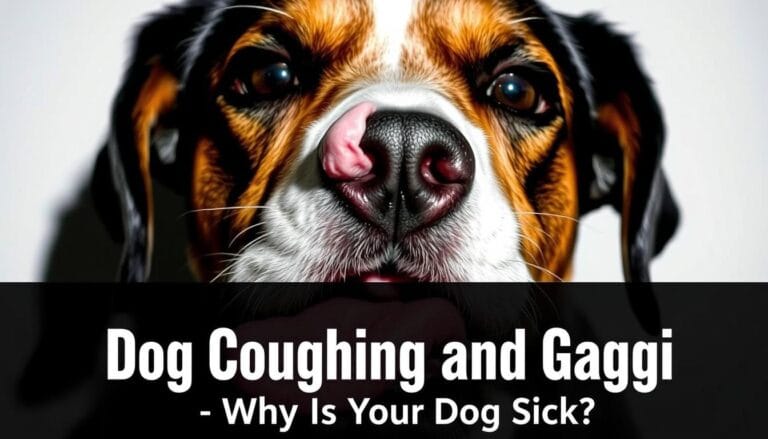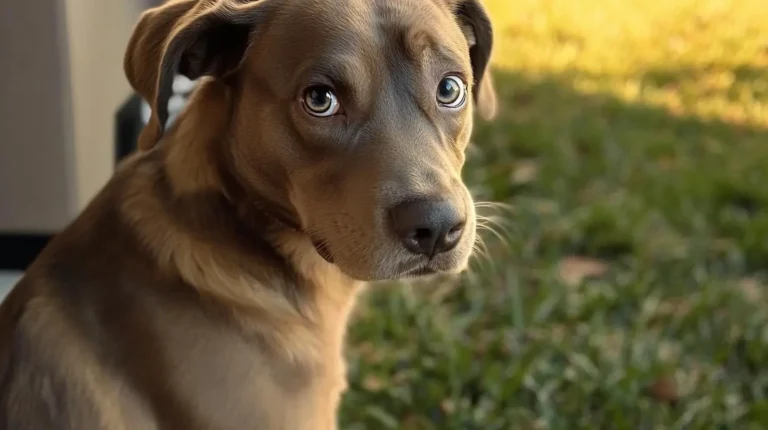Can Dogs Have Garlic: A Guide to Pet Safety
As a dog owner, I was shocked to learn garlic could harm my pet. The question of whether garlic is toxic to dogs is complex. It’s something every pet parent needs to understand.
Dealing with pet nutrition can be tricky. Garlic, a common ingredient in human cooking, is risky for dogs. While some believe garlic has benefits, science shows it can be dangerous.
This guide will explore the link between dogs and garlic. We’ll look at the key information dog owners need. We’ll discuss garlic’s toxicity, health risks, and how to protect your dog from it.
Table of Contents
Key Takeaways
- Garlic is potentially toxic to dogs in multiple forms
- Even small amounts can cause significant health risks
- Understanding garlic’s chemical composition is crucial
- Immediate veterinary attention is essential if garlic ingestion occurs
- Always check food labels for hidden garlic ingredients
Understanding the Relationship Between Dogs and Garlic
Dogs and garlic have a complex history that pet owners should understand carefully. The relationship between canines and this pungent herb is more nuanced than many realize. Knowing how much garlic is toxic to dogs can prevent potential health risks and protect your furry companion.
The History of Garlic in Pet Diets
Historically, some pet owners believed garlic could provide health benefits to dogs. Traditional folk remedies suggested using garlic as a natural flea repellent or immune system booster. These beliefs stemmed from limited understanding of canine nutrition and potential toxicity.
- Early pet owners used garlic as a home remedy
- Misconceptions about garlic’s healing properties were widespread
- Limited scientific research existed on garlic’s effects on dogs
Common Myths About Dogs and Garlic
“A small amount of garlic won’t hurt” is a dangerous misconception many pet owners believe.
Numerous myths surround garlic and dogs. Some people claim it provides health benefits, while others argue it’s completely toxic. Understanding how much garlic is toxic to dogs requires separating fact from fiction.
Scientific Research on Garlic and Canines
Modern veterinary research has clarified the risks associated with garlic consumption in dogs. Studies demonstrate that garlic contains compounds that can damage canine red blood cells, potentially leading to serious health complications.
- Garlic contains toxic sulfur compounds
- Even small amounts can cause oxidative damage
- Breed and size impact garlic toxicity levels
Pet owners should always consult veterinary professionals about potential dietary risks. They should maintain a cautious approach to introducing any new foods into their dog’s diet.
Why is Garlic Considered Toxic to Dogs
Garlic poisoning in dogs is a serious health issue. It happens because dogs can’t break down certain compounds in garlic like humans do. This makes garlic dangerous for their health.
The main problem with garlic for dogs is thiosulfates. These chemicals can harm a dog’s red blood cells. This leads to a condition called hemolytic anemia.
- Thiosulfates interfere with oxygen transportation in the bloodstream
- Red blood cells can become fragile and break down rapidly
- Even small amounts of garlic can trigger toxic reactions
“The smallest amount of garlic can pose a serious risk to your canine companion’s health,” warns veterinary nutritionist Dr. Sarah Thompson.
Dogs are very sensitive to garlic’s toxic effects. The compound N-propyl disulfide damages their red blood cells. This can cause severe health problems, even with a little garlic.
Studies show garlic poisoning can lead to serious health issues in dogs. The effects might not show right away. So, it’s important for pet owners to know about this and prevent it.
The Chemical Composition of Garlic and Its Effects on Dogs
Garlic has complex chemicals that can harm dogs. Knowing about these substances helps pet owners see the dangers of garlic for dogs.
The main harmful part of garlic is N-propyl disulfide. This chemical hurts a dog’s body, leading to serious health problems.
N-propyl Disulfide: A Dangerous Compound
N-propyl disulfide attacks a dog’s red blood cells. This is very dangerous for dogs. When dogs eat it, this compound:
- Damages red blood cell membranes
- Reduces oxygen-carrying capacity
- Triggers oxidative stress
Additional Harmful Compounds in Garlic
Garlic also has other harmful substances. These include:
- Sulfur-based organic compounds
- Allicin
- Thiosulfinates
“Even small amounts of garlic can cause significant damage to a dog’s health.” – Veterinary Toxicology Research
The effects of these compounds can be very serious. It’s important for dog owners to keep garlic away from their pets.
Can Dogs Have Garlic in Any Amount?
Pet owners often wonder if garlic is safe for dogs. The answer is clear: no amount of garlic is safe for dogs. Even a little garlic can be very harmful.
Garlic can hurt a dog’s health. How much garlic is toxic depends on several things:
- Dog’s body weight
- Individual sensitivity
- Specific breed characteristics
Studies show that even 0.5% of a dog’s body weight in garlic can be dangerous. For a 30-pound dog, that’s about 1-2 cloves of garlic.
“Preventing garlic exposure is always safer than treating its toxic effects” – Veterinary Nutrition Experts
Garlic can damage red blood cells, leading to hemolytic anemia. This can cause weakness, breathing problems, and even organ failure.
Dog owners should keep garlic out of their pets’ diets. No amount is safe, no matter the dog’s size or breed.
Symptoms of Garlic Poisoning in Dogs
Garlic is very dangerous for dogs and can cause serious health problems. It’s important for pet owners to know the symptoms of garlic poisoning. This way, they can act fast and keep their dogs safe.
Immediate Signs of Toxicity
Dogs that eat garlic may show scary symptoms right away. These signs include:
- Rapid breathing or panting
- Weakness and lethargy
- Pale or yellowing gums
- Vomiting and diarrhea
- Loss of appetite
Long-term Health Effects
Garlic can cause serious problems if dogs eat it often. The symptoms can get worse over time. This can lead to:
- Damage to red blood cells
- Anemia
- Decreased immune function
- Organ stress
“Early recognition of garlic poisoning symptoms can be life-saving for your dog.” – Veterinary Nutrition Experts
When to Contact Your Veterinarian
If you think your dog ate garlic, get help right away. Call your vet if you see any signs of garlic poisoning. This includes:
- Severe weakness
- Continued vomiting
- Dark-colored urine
- Unusual bruising
Seeing a vet quickly can help stop the bad effects of garlic poisoning. It can also prevent long-term health problems for your dog.
Hidden Sources of Garlic in Dog’s Diet
Pet owners might be surprised to learn about sneaky sources of garlic that can harm their dogs. Garlic powder is a big danger, often found in unexpected places in a dog’s diet.
Many commercial products have hidden garlic ingredients that pet owners might miss. Some common culprits include:
- Seasoned meat products
- Pre-packaged meals and sauces
- Certain types of baby food
- Processed snacks and crackers
- Some commercial dog treats
Homemade meals also pose a risk for garlic exposure. Cooking scraps or shared human meals might introduce garlic powder for dogs without owners knowing the risks.
“Always read ingredient labels carefully to protect your dog from unintentional garlic consumption.” – Veterinary Nutrition Expert
Be careful of these unexpected garlic sources:
- Marinades and salad dressings
- Premixed spice blends
- Frozen prepared meals
- Some peanut butter brands
- Certain bread products
Being vigilant is crucial to prevent accidental garlic exposure. Always check ingredient lists carefully. If you’re unsure about a food’s safety for your dog, talk to your vet.
The Dangers of Garlic Bread and Processed Foods
Pet owners often wonder, can dogs have garlic bread? The answer is a definite no. Garlic bread is dangerous for dogs because it has ingredients that can harm them.
Many human foods have garlic in them. This includes snacks and meals made for people. These foods can be toxic to dogs because of the garlic.
Common Food Items Containing Hidden Garlic
- Pre-made pasta sauces
- Frozen dinners
- Seasoned crackers
- Some salad dressings
- Processed meat products
Identifying Garlic in Pet Food Labels
Reading pet food labels is important to keep your dog safe. Look for these ingredients:
- Allium vegetables
- Garlic powder
- Garlic extract
- Natural flavors
“One small bite of garlic bread could potentially cause serious health complications for your dog.” – Veterinary Nutrition Expert
It’s key to understand what’s in your dog’s food. Always check with a vet if you’re unsure about ingredients.
Treatment Options for Garlic Poisoning
Garlic poisoning in dogs needs quick and expert medical help. If a dog eats garlic, owners must act fast to avoid health problems. The treatment includes important steps to keep the dog safe and help them get better.
Vets will first check how bad the poisoning is with tests. These might include:
- Blood work to check for anemia
- Urinalysis to evaluate kidney function
- Physical examination to determine overall health
The main treatment for garlic poisoning is supportive care. Veterinary professionals may recommend:
- Inducing vomiting if the garlic was recently consumed
- Administering activated charcoal to prevent further toxin absorption
- Providing intravenous fluids to support hydration
- Monitoring oxygen levels and potential blood transfusions
“Swift intervention is crucial in managing garlic poisoning in dogs,” says Dr. Emily Roberts, veterinary toxicology specialist.
In serious cases, dogs might need to stay in the hospital for a while. Treatment can last from 24 to 72 hours. This depends on how much garlic the dog ate and how they react to treatment.
Pet owners should not try to treat garlic poisoning at home. The best and safest way is to get professional vet care.
Safe Alternatives to Garlic for Dogs
Pet owners looking for ways to make their dog’s meals more exciting can relax. Garlic powder is a no-go, but there are many safe and tasty options to spice up your dog’s food.

Dogs need food that’s both healthy and tasty, just like us. Veterinary nutritionists suggest several natural ways to add flavor that are safe and good for them.
Natural Flavor Enhancers for Dog Meals
- Parsley: Adds fresh flavor and supports digestive health
- Basil: Provides an herbal taste without harmful side effects
- Oregano: Offers mild seasoning with potential antioxidant benefits
- Turmeric: Supports inflammation reduction and provides subtle warmth
Healthy Seasonings for Dog Food
When choosing seasonings, always think about your dog’s health first. Here are some pet-friendly options:
- Bone broth powder: Enhances taste and provides nutrients
- Nutritional yeast: Adds cheesy flavor and vitamin B complex
- Dried kelp: Introduces minerals and umami taste
“Always consult your veterinarian before introducing new ingredients to your dog’s diet.” – Veterinary Nutrition Experts
Trying out these alternatives means your dog can enjoy tasty meals without the dangers of garlic powder. Remember, it’s all about balance and getting advice from a vet to keep your pet healthy.
Preventing Accidental Garlic Exposure
To keep your dog safe from garlic, you need to take steps ahead of time. Since garlic can be harmful to dogs, it’s important to make a safe space for them. This means reducing the chance of them accidentally eating garlic.
Making your kitchen safe for dogs involves several steps. Here are the key actions to avoid garlic exposure:
- Store garlic in sealed, high cabinets out of your dog’s reach
- Use childproof locks on kitchen drawers and pantry spaces
- Train family members about the dangers of feeding dogs table scraps
- Keep garbage containers securely closed
Be careful not to drop garlic pieces when cooking. Dogs are curious and might eat them before you can stop them. Clean up right after cooking to remove any dangers.
“An ounce of prevention is worth a pound of cure when protecting your furry friend from garlic toxicity.” – Veterinary Nutrition Expert
Telling guests about the dangers of garlic can help prevent accidents. Make sure they know what foods are bad for your dog.
- Post visible kitchen reminders about dog-unsafe foods
- Provide alternative dog-friendly treat options
- Supervise interactions between guests and your pet
Being careful and teaching others is key to keeping your dog safe from garlic. This way, your dog can stay healthy and happy.
Myths About Garlic’s Health Benefits for Dogs
Dog owners often hear wrong info about garlic’s health benefits. Many think giving dogs garlic bread or supplements can help. But these myths can really harm your pet.
Let’s look at some common garlic myths for dogs:
- Myth: Garlic repels fleas naturally Vets say this is not true. Garlic doesn’t keep fleas away and can hurt your dog.
- Myth: Garlic boosts immune system function Studies show garlic can damage red blood cells. This can lead to anemia, not better health.
- Myth: Small amounts of garlic are harmless Even a little garlic can be toxic to dogs, no matter their size or breed.
“The risks of garlic far outweigh any potential benefits for canine health.” – Veterinary Nutrition Experts
Always talk to a vet for safe health advice for your pet. Using old wives’ tales or untested online tips can harm your dog.
So, can dogs have garlic bread or foods with garlic? The answer is a big no. Keep your dog safe by avoiding garlic altogether.
What to Do If Your Dog Eats Garlic
Discovering that your dog has eaten garlic can be scary. It’s important to act fast to prevent garlic poisoning. Stay calm and follow these steps to keep your dog safe.

Emergency Steps to Take Immediately
Here are the key steps to take if you think your dog has garlic poisoning:
- Remove any remaining garlic from your dog’s reach
- Do not induce vomiting without veterinary guidance
- Keep your dog calm and comfortable
- Observe your pet for initial symptoms of garlic toxicity
Gathering Critical Information for Your Vet
Getting the right information is crucial for your vet to treat your dog. Here’s what to gather:
- Estimate the amount of garlic consumed
- Note the time of garlic ingestion
- Record any observed symptoms
- Prepare your dog’s medical history
“Swift action and accurate information can make a significant difference in treating garlic poisoning.” – Veterinary Emergency Experts
Veterinary Care Preparation
Call your vet right away if you think your dog ate garlic. Give a clear, concise description of what happened. Your vet might want to see your dog right away or might suggest watching for symptoms.
Understanding Toxic Doses and Risk Factors
Knowing how much garlic is toxic to dogs involves looking at several risk factors. Dog owners need to know that no amount of garlic is safe for dogs. The danger of garlic depends on several key factors that can greatly affect a dog’s health.
Dogs react differently to garlic. Important factors that affect how much garlic is toxic to dogs include:
- Body weight
- Breed sensitivity
- Overall health condition
- Age of the dog
- Individual metabolic differences
Studies show that about 15-30 grams of garlic per kilogram of body weight can lead to serious health issues. Even small amounts can be risky for smaller dog breeds.
“Every dog’s tolerance is different, but no amount of garlic should be considered completely safe.” – Veterinary Toxicology Experts
Some dog breeds are more likely to get sick from garlic. Breeds with genetic blood disorders or weak immune systems are at higher risk.
Dog owners should watch out for garlic in their pet’s surroundings. This includes processed foods, table scraps, and hidden ingredients in commercial products.
Conclusion
Knowing if garlic is toxic to dogs is very important for pet owners. The facts show that garlic is harmful to dogs, no matter how little they eat. Many pet owners might think garlic is safe, but science says it’s not.
Dog owners need to watch what their pets eat closely. They should check food labels for garlic. If garlic is in the food, it’s best to avoid it. Garlic can cause serious health problems in dogs, affecting their blood and overall health.
Learning about garlic toxicity is essential. By knowing the risks, pet owners can make better choices for their dogs. Regular vet visits and careful food choices help keep dogs safe from harmful foods like garlic.
To keep your dog safe, you need to be informed and careful. Not giving garlic to your dog is a big step in keeping them healthy and happy. It’s a simple way to protect your dog’s health for a long time.
FAQ
Is garlic toxic to dogs?
Yes, garlic is toxic to dogs. It has compounds like N-propyl disulfide that harm their red blood cells. This can lead to hemolytic anemia. Even a small amount can be dangerous.
How much garlic is toxic to dogs?
There’s no safe amount of garlic for dogs. Even a tiny amount, like 0.5% of their body weight, can be toxic. This is very dangerous for smaller dogs.
What are the symptoms of garlic poisoning in dogs?
Dogs poisoned by garlic may show weakness and pale gums. They might also vomit, have diarrhea, and breathe harder. Other signs include a fast heart rate and signs of anemia like tiredness and fainting. In severe cases, it can damage organs or be life-threatening.
Can dogs have garlic powder?
No, garlic powder is just as toxic to dogs. It’s even more dangerous because it’s more concentrated. This means it has more of the harmful compounds.
Can dogs have garlic bread?
Absolutely not. Garlic bread is bad for dogs because of the garlic and other ingredients like butter. These can upset their stomachs. It’s important to keep dogs away from garlic bread.
Are there any safe alternatives to garlic for dogs?
Yes, there are safe options like parsley, basil, or other dog-safe herbs. Always check with a vet before adding new foods to your dog’s diet.
What should I do if my dog accidentally eats garlic?
Call your vet right away. Don’t wait for symptoms to show. Tell them how much garlic your dog ate and when. They might ask you to bring your dog in for a check-up.
Can garlic help repel fleas on dogs?
No, this is a myth. Garlic is not safe or effective for repelling fleas. Use vet-approved flea prevention methods instead.
There are no reviews yet. Be the first one to write one.







